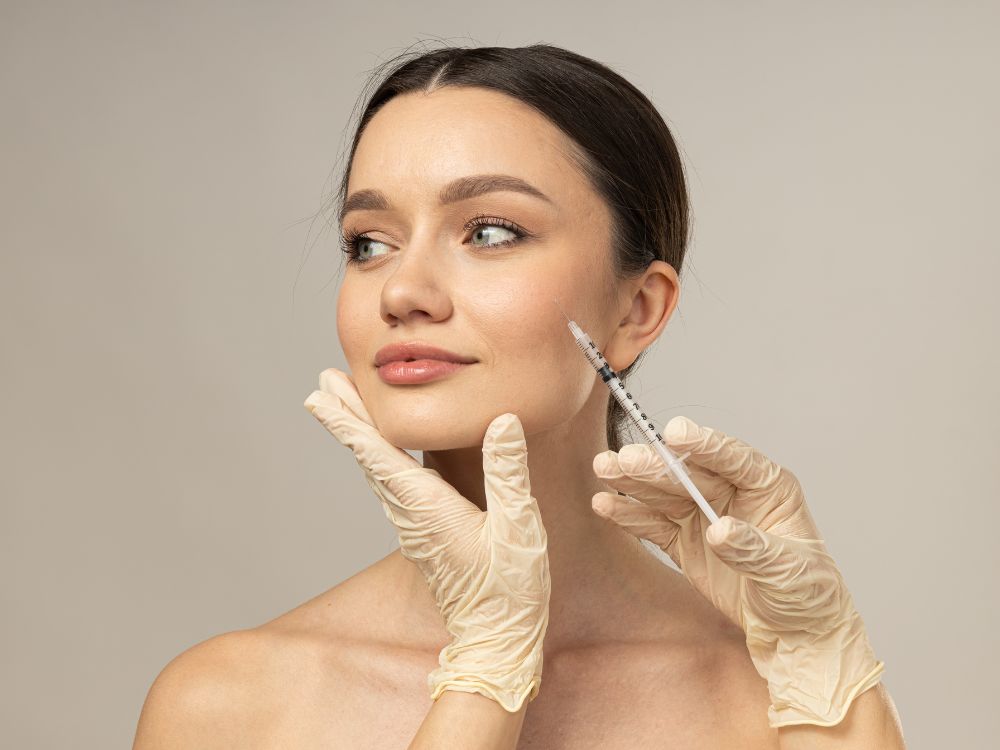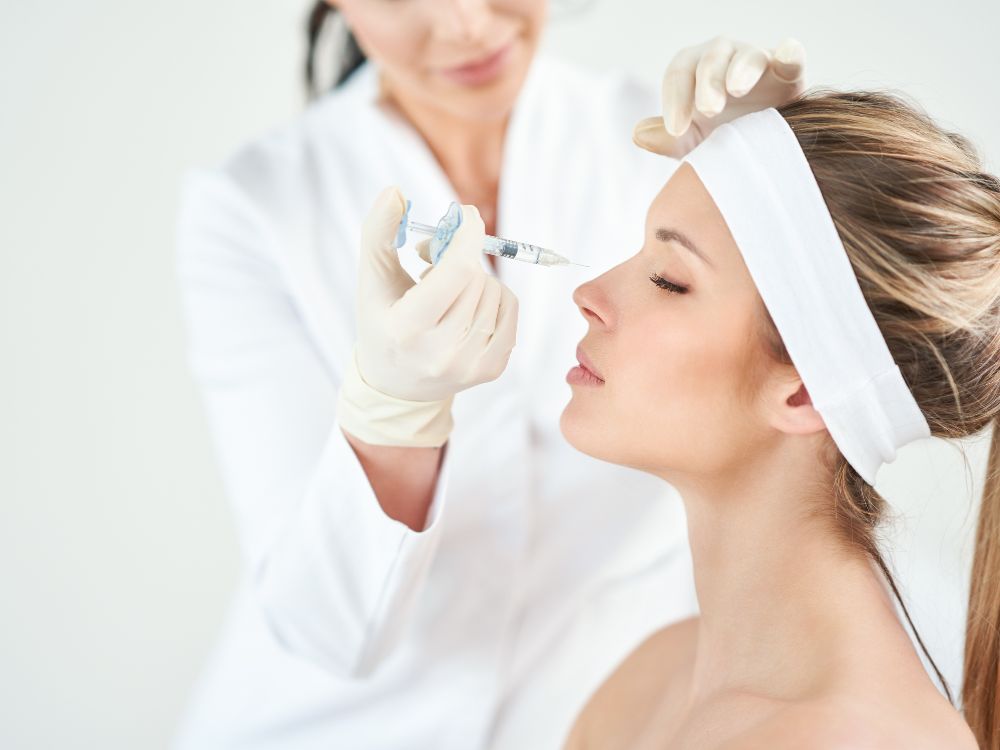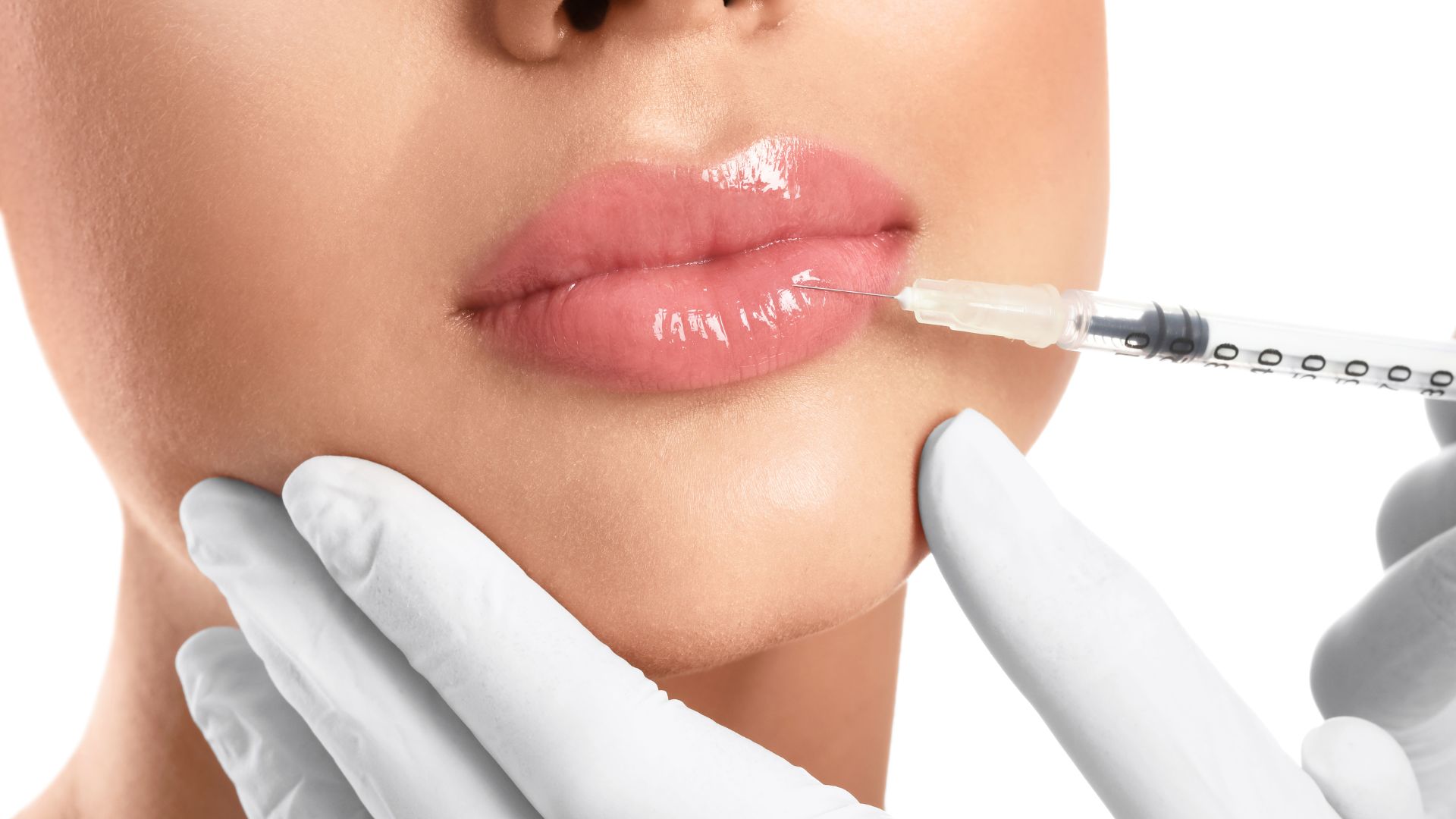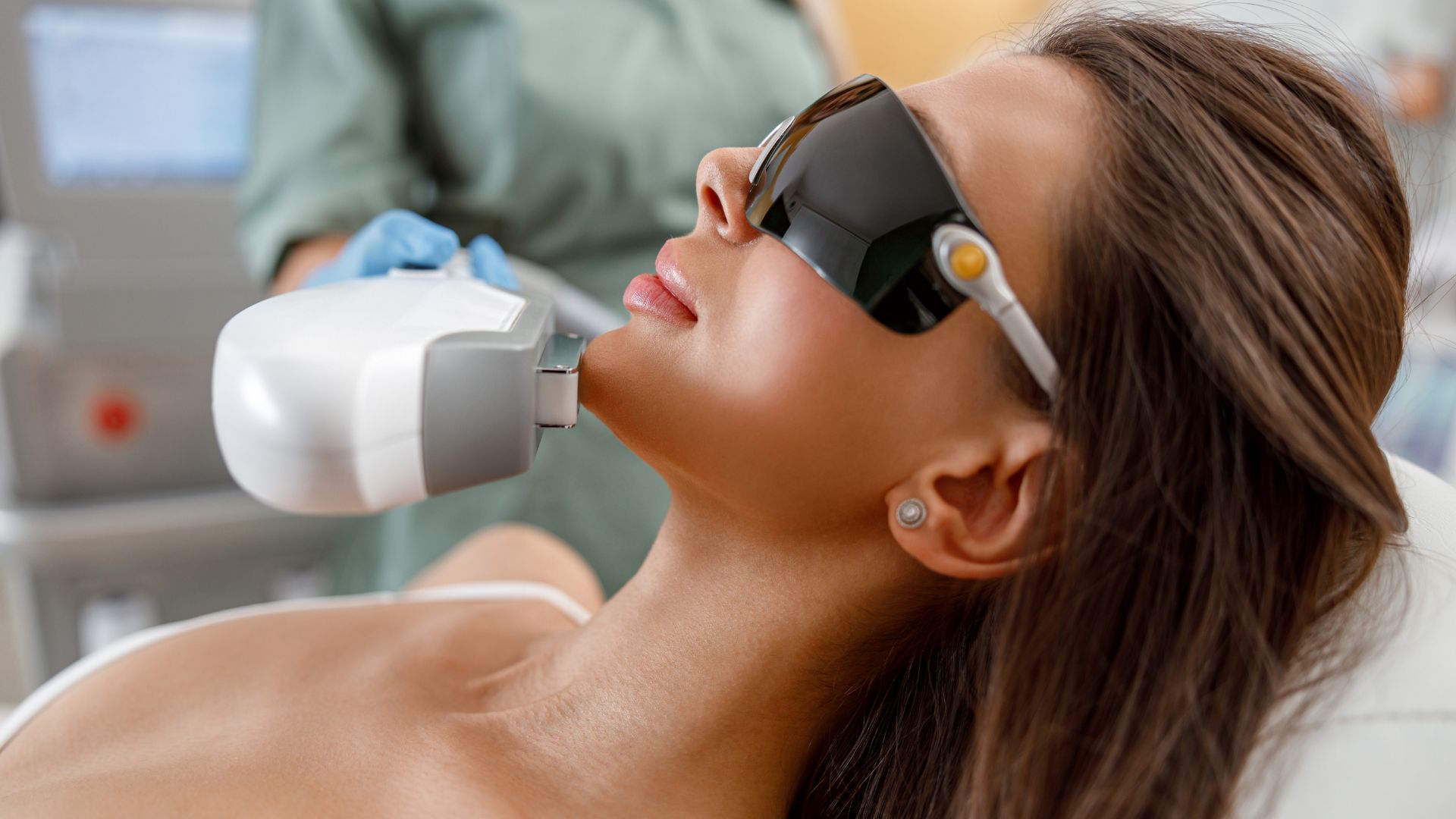
Mastering Botox Injection Technique: Tips for Every Aesthetic Professional
In the ever-evolving field of aesthetic medicine, BOTOX remains a standout treatment, celebrated for its ability to smooth dynamic wrinkles and enhance facial aesthetics. Mastering the BOTOX injection technique is pivotal, not only for ensuring optimal patient satisfaction but also for advancing one’s career within the realm of aesthetic procedures.
This article is designed to be your comprehensive guide to refining your BOTOX injection techniques, whether you are initiating your practice or looking to hone your existing skills. Here’s a glimpse of what you’ll discover:



- Understanding BOTOX and Its Functional Anatomy: Delve into the mechanics of botulinum toxin and its interaction with facial anatomy.
- Advanced BOTOX Injection Techniques: Explore strategies to enhance precision in targeting complex muscles like the glabellar muscles and lateral orbicularis oculi.
- Safety Protocols and Compliance: Learn about the latest guidelines to maximize safety and minimize adverse effects.
- Expert Insights and Tips: Gain practical insights from leading practitioners in the field to avoid common pitfalls and enhance the efficacy of your technique.
A Journey Through Time: The Evolution of BOTOX in Aesthetic Treatments
BOTOX, or botulinum toxin type A, is a revolutionary drug known primarily for its ability to reduce the appearance of facial wrinkles. It operates by temporarily paralyzing muscles, which is achieved through the prevention of neurotransmitter release at the neuromuscular junctions. This inhibition of muscle contraction smooths dynamic wrinkles and can prevent the formation of static lines with repeated use. According to the U.S. Food and Drug Administration (FDA), BOTOX injections are both safe and effective when administered by a trained professional. The history of BOTOX is as fascinating as its many applications. Initially identified as a therapeutic tool for treating conditions like cervical dystonia and even urinary incontinence, its aesthetic potential was discovered almost by chance in the late 1980s. It was Dr. Jean Carruthers, an ophthalmologist, who noticed that botulinum toxin treatments not only helped with blepharospasm (eyelid spasms) but also smoothed out glabellar lines (those vertical lines between the eyebrows). This discovery sparked the beginning of BOTOX’s use in cosmetic procedures, a path that transformed it into a mainstay in aesthetic treatments today. The Journal of Cosmetic and Laser Therapy reports a significant evolution in the usage of BOTOX over the years, from a clinical anomaly to a mainstay in cosmetic dermatology. Initially, injections of botulinum toxin were reserved for specific medical reasons, but over time, techniques have evolved to cater to the unique structure of each patient’s facial muscles. This involves carefully targeting facial anatomy and understanding the depth of muscles like the frontalis muscle on the forehead to achieve a rejuvenated appearance while maintaining natural facial expressions. In aesthetic medicine, injections of botulinum toxin type A are often used to soften dynamic wrinkles such as frown lines, horizontal forehead lines, and even lateral canthal lines (crow’s feet). Cosmetic practitioners now take a highly individualized approach to each patient’s treatment, considering specific facial features and anatomical landmarks to reduce adverse events and undesired outcomes, such as brow ptosis or droopy eyelids. Experienced injectors know the importance of conservative dosing, understanding that too much botulinum toxin could compromise the natural expression of emotion, while a careful application can lift and contour, creating a harmonious smile or lifting eyebrow positioning subtly and beautifully. The application of botulinum toxin in aesthetic treatments has also been paired with complementary options like dermal fillers for clients seeking fuller, smoother facial lines. Techniques in this field continue to adapt with a keen focus on patient safety and satisfaction, where even the most refined injection techniques and tools, such as treatment grids and assessment methods, are used to map out facial areas to prevent complications. In summary, BOTOX has come a long way from treating medical conditions to becoming essential in aesthetic procedures, applied by skilled healthcare providers who understand facial structures, muscle interaction, and anatomy. With ongoing research and advancements, BOTOX continues to meet evolving aesthetic standards, delivering smooth, youthful looks with minimal side effects and high patient satisfaction.
Mastering Essential BOTOX Injection Techniques: A Comprehensive Guide
Precision in BOTOX injection techniques is critical, not only to achieve the desired cosmetic outcomes but also to ensure patient safety and satisfaction. This section dives into the essentials of BOTOX application, from preparation to advanced methods, ensuring practitioners can elevate their skills effectively.Preparation: Laying the Groundwork for Success
Before the needle ever touches the skin, a series of critical steps must be taken to ensure the effectiveness and safety of BOTOX injections:- Understanding Facial Anatomy: The accurate identification of target muscles, such as the corrugator supercilii for glabellar lines or the orbicularis oculi for crow’s feet, is essential. This understanding helps in delivering BOTOX precisely where it’s needed to optimize the aesthetic outcome while minimizing the risk of diffusion to adjacent muscles.
- Selecting the Right Product: Not all formulations of botulinum toxin are the same. The choice between different brands (such as BOTOX Cosmetic, Dysport, or Xeomin) may affect the dosage, diffusion, and duration of the effect. Each product may offer specific advantages, depending on the treatment area and desired results.
- Preparing the Patient: Patient preparation involves not only the physical aspects, such as cleaning the injection site with normal saline but also addressing patient concerns and managing expectations.
BOTOX Injection Technique Basics: Injection Patterns and Practices
- Forehead and Eyebrows: For treating horizontal forehead lines, the frontalis muscle must be approached with care to avoid drooping and asymmetry. It is very important to adjust injection depths and amounts, especially when targeting the delicate balance needed to maintain natural eyebrow positions.
- Eyes: Techniques for the areas around the eyes must be finely tuned to address finer lines without affecting the sensitive muscles controlling eyelid movement. Targeting the lateral orbicularis oculi muscles requires a light hand and precision to smooth wrinkles effectively without impacting the natural eye closure.
- Mouth: Perioral lines and marionette lines require injections that are shallow and strategically placed to avoid over-weakening the muscles needed for expressions and functions such as speaking and eating.
Advanced BOTOX Injection Technique: Beyond the Basics
- Neck and Lower Face: Advanced BOTOX applications can involve the platysma bands of the neck or the lower face areas to contour the jawline and reduce the appearance of neck creases. These areas require an advanced understanding of muscle interactions to ensure that the results are enhancing rather than impairing natural movements.
- Tailoring to Individual Facial Structures: Each face is unique, and so should be the approach to BOTOX injections. Customizing techniques to align with individual anatomical differences ensures better outcomes and higher patient satisfaction. Adjusting for factors such as muscle strength, previous BOTOX usage, and facial asymmetry can significantly enhance results.

Ensuring Safety and Compliance in BOTOX Procedures
Adhering to stringent safety standards is not only a professional obligation but also a key factor in preventing complications and ensuring patient satisfaction.Navigating Regulatory Guidelines for BOTOX Administration
The administration of BOTOX is closely regulated to protect both practitioners and patients, ensuring botox injection techniques are performed safely and effectively. Regulatory bodies like the FDA and equivalent authorities worldwide oversee these procedures, requiring that only qualified healthcare providers handle botulinum toxin injections for aesthetic procedures.- Training and Certification: Clinicians must complete specific training and obtain certification in BOTOX injection techniques. This education focuses on a thorough understanding of facial anatomy, particularly the functional anatomy of facial muscles like the frontalis muscle and the orbicularis oculi muscle to address concerns like frown lines and crow’s feet. Training covers proper BOTOX injection techniques, the pharmacology of botulinum toxin type A, and handling aesthetic botulinum toxin type products. A deep knowledge of anatomical landmarks helps providers achieve precise results while minimizing the risk of undesired outcomes like facial asymmetry.
- Product Handling and Usage: The FDA mandates that BOTOX must be stored and handled according to strict guidelines to maintain its efficacy and safety. BOTOX must be reconstituted, typically with sterile normal saline, under aseptic conditions to maintain its efficacy. Proper handling reduces the risk of adverse events and helps achieve the desired treatment outcome. The amounts of botulinum toxins used are tailored to each area, ensuring the toxin is administered with optimal precision for each cosmetic procedure.
- Patient Assessment and Preparation: Before any BOTOX procedure, a thorough patient assessment is essential. This includes a comprehensive medical history to identify any medical conditions or health conditions that may contraindicate treatment, like certain neurological disorders or allergies to botulinum toxin. Providers assess facial features and specific facial structures to determine the best approach, often using conservative techniques to ensure natural facial movement post-treatment. Patients are also informed about possible side effects, such as droopy eyelids or minor adverse events, to ensure they have realistic expectations.
Standardizing the BOTOX Injection Technique to Minimize Risks
The technique employed during the injection of botulinum toxin significantly influences the safety and efficacy of the procedure. For instance, precise knowledge of muscle depth and location is crucial to avoid unintended toxin diffusion to adjacent muscles, which can lead to complications like muscle weakness or drooping.- Documented Techniques: The standardized injection patterns for areas such as the forehead, crow’s feet, and glabellar lines are critical for avoiding adverse events. The injection should be placed at a specific depth and angle to target only the intended muscles.
- Customization Based on Anatomy: Each patient’s facial anatomy is unique, necessitating adjustments in the injection technique to accommodate individual variations. The positioning of injections, especially around sensitive areas like the eyes and eyebrows, must be meticulously planned to maintain natural facial expressions and avoid affecting the muscle’s functionality adversely.
Ongoing Monitoring and Reporting of Adverse Events
Continual monitoring of patients after BOTOX treatments is essential for early detection and management of any adverse effects. Healthcare professionals are encouraged to report all adverse events to regulatory authorities to help refine the safety profiles of cosmetic procedures. In conclusion, the meticulous adherence to safety standards and regulatory guidelines is indispensable in the practice of administering BOTOX. These protocols are designed not only to safeguard patient health but also to uphold the reputation and effectiveness of aesthetic treatments in the long run.Expert Tips and Tricks for Mastering the BOTOX Injection Technique
In the nuanced world of aesthetic medicine, the expertise of seasoned practitioners is invaluable. These professionals, who have refined their BOTOX injection techniques through years of practice and continuous learning, offer a wealth of knowledge that can significantly improve outcomes and patient satisfaction.Avoiding Common Pitfalls in BOTOX Administration
Even the most skilled aesthetic practitioners can face challenges in BOTOX applications. Here are some expert insights on common pitfalls and how to avoid them:- Over-treatment: One of the most frequent mistakes in botox injections is over-treatment, which can result in an unnatural look. Careful dosing, especially in dynamic areas like the forehead lines and crow’s feet, is crucial. A conservative approach often yields the best treatment outcome, ensuring smooth facial lines without compromising natural facial movement.
- Incorrect Muscle Targeting: Misidentifying muscles during a botox injection technique can lead to ineffective results and patient dissatisfaction. A deep understanding of facial anatomy and facial muscles is essential. This knowledge allows for precise injections that enhance facial features without risking facial asymmetry or complications like brow ptosis.
- Managing Patient Expectations: Clear communication about what botulinum toxin injections can and cannot achieve is essential to ensure patient satisfaction. Detailed pre-treatment consultations help align expectations, creating a positive experience for the individual patient and setting the stage for high patient-reported outcomes.
- Adverse Reactions: Although rare, adverse events like mild bruising or temporary muscle weakness can occur. Educating patients on possible side effects and how to manage them, such as applying an ice pack to reduce swelling, is key. Practitioners should also inform patients about avoiding blood thinners prior to treatment to minimize bruising risks.
- Technique Refinement: Consistency is crucial for achieving desirable results with botox injection techniques. Techniques like the “five-point injection” for the glabellar complex or the “micro-droplet technique” around expression lines ensure smooth, natural-looking outcomes. Precise, consistent BOTOX injection techniques that take into account the unique facial structures of each patient—like the depth of brow depressors or lateral frontalis muscles—help maintain a balanced, rejuvenated appearance.

Embracing Continuous Learning in Aesthetic Medicine
The landscape of techniques, products, and safety regulations is constantly shifting, and staying abreast of these changes can significantly enhance the efficacy and safety of treatments. Practitioners who engage in ongoing education are less likely to encounter complications and more likely to achieve superior patient outcomes.Resources for Further Education and Training
Several platforms and resources are available for aesthetic professionals looking to enhance their expertise in BOTOX injection techniques:- Professional Workshops and Seminars: Leading experts in the field often host workshops that focus on advanced BOTOX techniques and new application areas such as the treatment of the lower face and neck.
- Certification Programs: Many esteemed institutions offer certification programs in BOTOX administration. These programs typically cover everything from basic BOTOX injection techniques to complex considerations like the diffusion of toxin and muscle depth. These programs provide a solid foundation in safe practices, such as handling cosmetic injectables and managing potential complications like brow ptosis or brow asymmetry.
- Online Courses and Webinars: With the rise of digital learning platforms, many reputable organizations offer online courses that cover both fundamental and advanced BOTOX procedures.
- Peer-Reviewed Journals and Publications: Subscribing to journals like Plast Reconstr Surg, Facial Plast Surg, and Dermatol Surg keeps practitioners informed about the latest research, clinical trials, and expert perspectives on botulinum toxin injections and other aesthetic treatments. These publications provide insights into the effectiveness of botulinum toxin, potential adverse events, and practical techniques to enhance outcomes.
Leveraging Technology for Better Learning Outcomes
Technological advancements have also made it easier to understand complex anatomical details and BOTOX injection techniques through augmented reality (AR) and virtual reality (VR) simulations. These tools allow for a deeper understanding of muscle movements and toxin effects, providing a safe environment to practice and refine techniques without patient risk. In conclusion, the commitment to continuous education in the field of aesthetic medicine not only enhances the practitioner’s skills but also ensures that patients receive the safest, most effective treatments available.Learn from the Best: Aesthetics Medical Training
At the forefront of aesthetic education, our online school embodies a steadfast commitment to excellence and accessibility. Designed for aspiring and seasoned practitioners alike, our programs offer a deep dive into the aesthetic techniques and procedures that shape today’s beauty standards.- Curated Courses Offered: Our course offerings are meticulously crafted to provide comprehensive training in BOTOX injection techniques, laser therapy, and dermal fillers.
- Seamless Learning Experience: We understand that our students have diverse needs and schedules. Our online platform offers unmatched flexibility, allowing students to learn at their own pace and from anywhere in the world.
- Certification and Career Opportunities: Graduating from our school means more than just completing a course—it paves the way for a thriving career in medical aesthetics.
- Flexible Payment Plans: Thanks to our partnerships with leading financial institutions, we offer flexible payment plans that make our courses accessible to a wider audience.

Thinking About Advancing Your Aesthetics Skills?
Contact our team today to learn how our training programs and cutting-edge technology can support your journey. Fill out the form or give us a call to get started.



